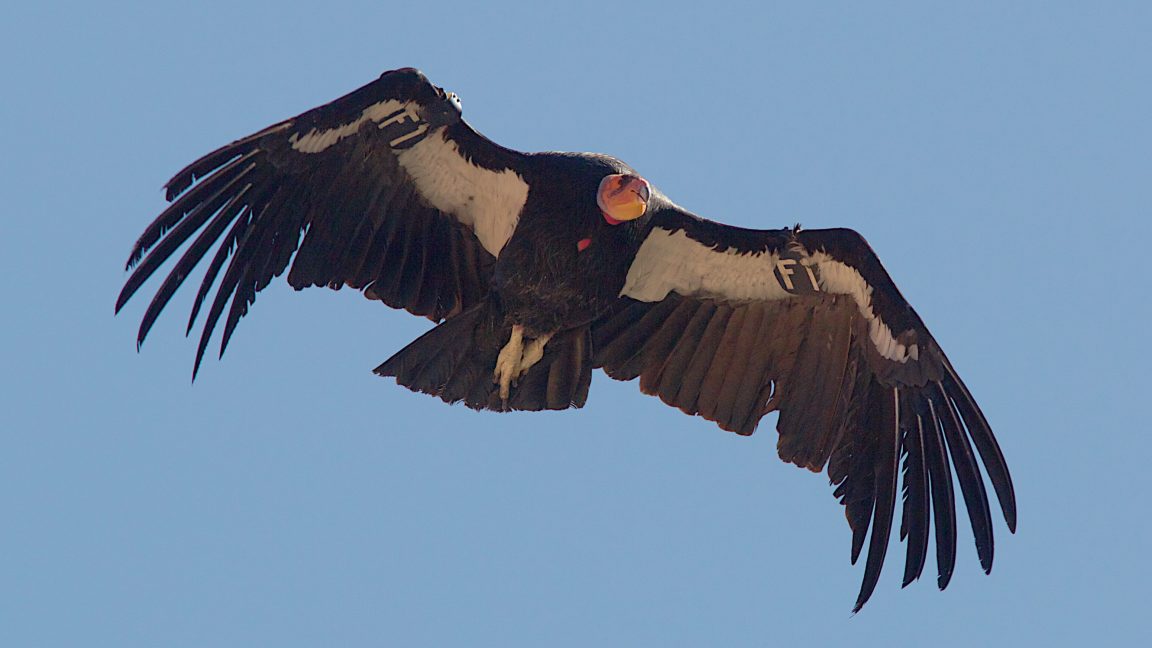Return of the California Condor

The complete decoding of the California condor genome, published in 2021, also revealed valuable information about the bird’s evolutionary history and prehistoric abundance. Millions of years ago, it was a species with an effective population of some 10,000 to 100,000 individuals. Its decline began about 40,000 years ago during the last ice age, and was later exacerbated by human activities. Despite this, Steiner says, the species retains a genetic variability similar to birds that are not endangered.
A problem with lead
Despite these great efforts and a renewed understanding of the species, threats to the condor remain.
In the 1980s, when efforts to monitor the last condors in the wild intensified, a revealing event took place: After 15 of them died, four were necropsied, and the cause of death of three of them was shown to be lead poisoning.
Although these Cathartiformes—from the Greek kathartes, meaning “those that clean”—are not usually prey for hunters, their scavenging nature makes them indirect victims of hunter bullets, which kill them not by their impact, but by their composition. Feeding on the flesh of dead animals, condors ingest fragments of lead ammunition that remain embedded in the carcasses.
Once inside the body, lead—which builds up over time—acts as a neurotoxin that affects the nervous, digestive, and reproductive systems. Among the most devastating effects is paralysis of the crop, the organ where condors store food before digesting it; this prevents them from feeding and causes starvation. Lead also interferes with the production of red blood cells, causing anemia and progressively weakening the bird, and damages the nervous system, causing convulsions, blindness, and death.
Efforts in the United States to mitigate the threat of lead to the condors have been extensive. Since the 1970s, several strategies have been implemented, such as provision of lead-free food for condors, campaigns to educate hunters about the impact of lead bullet use on wildlife, and programs showing conservation-area visitors how important birds are to the ecosystem. Government regulations have also played a role, like the Ridley-Tree Condor Preservation Act of 2007, which mandates the use of lead-free ammunition for big-game hunting within the condor’s range in California. However, these efforts have not been sufficient.
Source link







